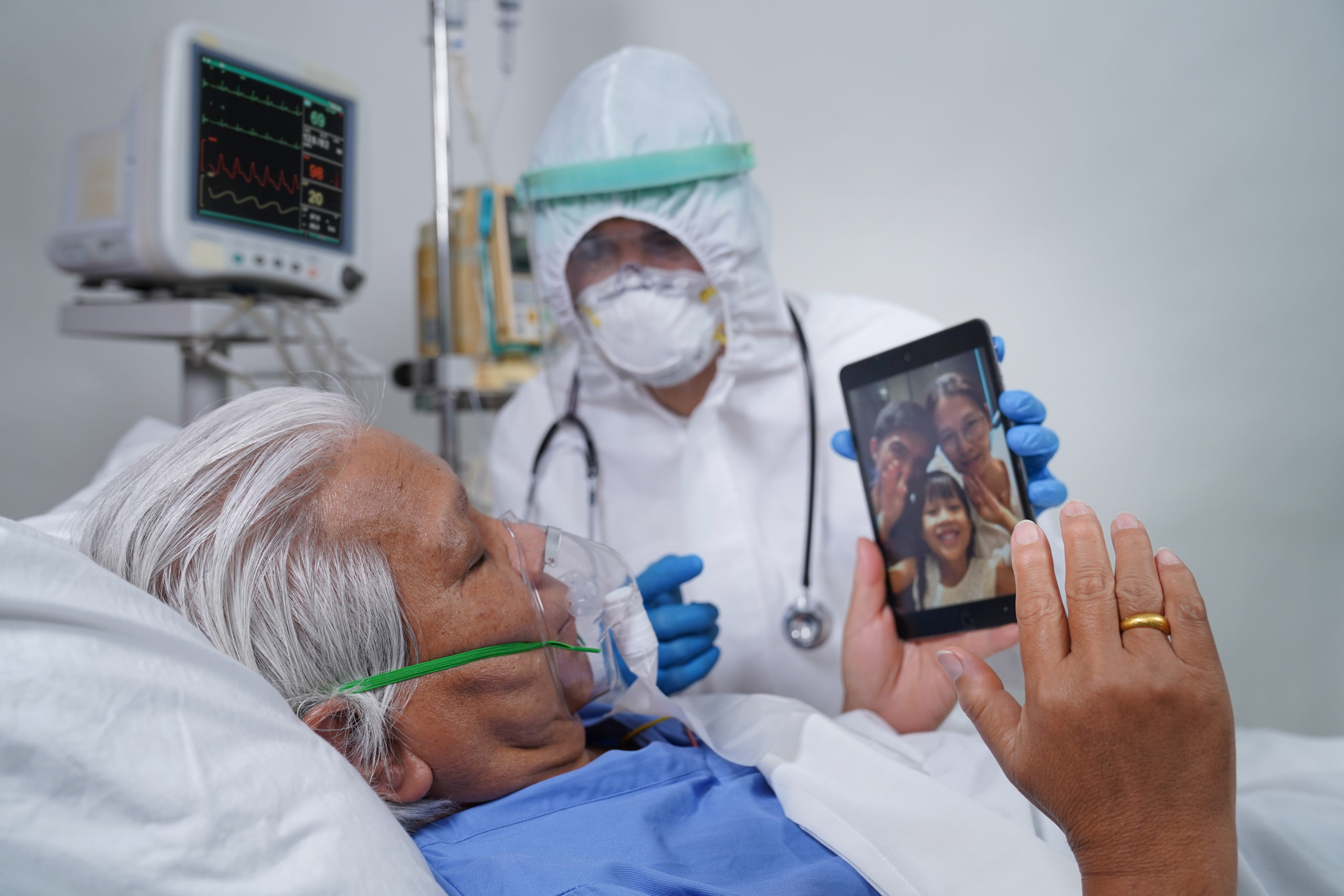Using digital to enhance inclusion in our hospitals

We have all had a curtailment of time spent with loved ones throughout this pandemic, and nowhere is this felt more harshly than by patients in hospital.
Throughout the pandemic visitors were not permitted into hospitals so patients had limited means of keeping in touch with loved ones, particularly if they did not have their own personal mobile device. “The patients most affected by this were the elderly,” says Ian Spark, Head of Healthcare for WiFi SPARK. “These were the least likely to have a tablet or laptop and the most likely to miss physical visits from people – suffering from loneliness and lack of mental stimulation as a result.”
Suddenly this gap had the potential to create a serious mental welfare issues for patients who simply do not have the digital savviness to pick up a smartphone and talk to their loved ones. This in turn began increasing demands upon clinical staff trying to care for every patient while managing demands from the pandemic.
“There was a clear need for a device that can be used by people who are not fully technically literate, which also protects their data in a secure way,” Ian adds. “When you take visitors and family away, what left do you have to enhance the patient experience?”
Building accessibility from the ground up
Within a week of receiving a brief from Oxford University Hospitals NHS Foundation Trust, WiFi SPARK designed, built and deployed SPARK® Media: Unite, a virtual-visiting solution on Trust-owned tablets. The solution consisted of 246 Samsung tablets which were preloaded with the SPARK® Media platform to enable patients to video-call friends and family. The tablets were supplied with antimicrobial hardware options such as bedside mounting arms and brackets so that they could be held securely in a comfortable position for patients.
The platform’s functionality includes video-calling via Visionable:Connect, a secure video-calling platform that patients, their families and friends can use without having to register or set up an account. Patients or those looking after them simply need to send an SMS or email message with a video-call link to their loved ones; and can be in touch with them as soon as they click the link to join the call.
The tablets are securely loaned to patients to enable them to keep in touch with their loved ones and also to use for entertainment, information and distraction. The devices are protected, meaning that only pre-agreed apps are accessible on the tablets. This means that trusts can be confident that they are offering patients a tablet that is secure and offers multiple options for patients to video-call, get information and be entertained.
SPARK® Media has been introduced to 30 NHS trusts since the beginning of the Covid-19 crisis. In April and May 2020, across seven trusts, 8,336 video-calls were made by patients using the Visionable App. This equates to 1,308 hours of contact time with loved ones, which is nearly 55 days of continuous use.
While this project was implemented at pace, this was always intended to be a solution with longevity built in. “The trusts were keen not to simply invest in something that would eventually turn into a paperweight; they wanted a long-term solution,” says Ian. Key to this longevity is ensuring that all relevant parties agree on what the end goal is. How is this solution going to enhance the patient experience? This, in Ian’s mind , is the key question – it is not simply about getting a tablet in and finding something to use it for.
While Ian acknowledges that trusts still vary in their digital maturity, he is positive that the NHS is now looking towards digital technology with a more enterprising mindset – transferring an industry-like vigour to digital technology that can deliver projects at scale and at pace.
A digitally inclusive future
The case study of WiFi SPARK ticks three crucial boxes when it comes to delivering a digitally inclusive platform. It addresses a potential deficit in digital skills: it enables less tech-savvy patients to use digital tech to enhance their experience. It increases connectivity: using a platform that can be linked across the trust and integrated with a multitude of platforms. Finally, the app is accessible and is designed to meet all user needs.
With an increasingly crowded digital marketplace, it is crucial to ensure that digital tools harnessed to improve healthcare services are built with inclusion at their heart. The danger is that as we opt ever more for digital means of communication, certain groups could be left behind, so we must embrace more inclusive technology to keep this digital momentum going.
